Technology

8 min
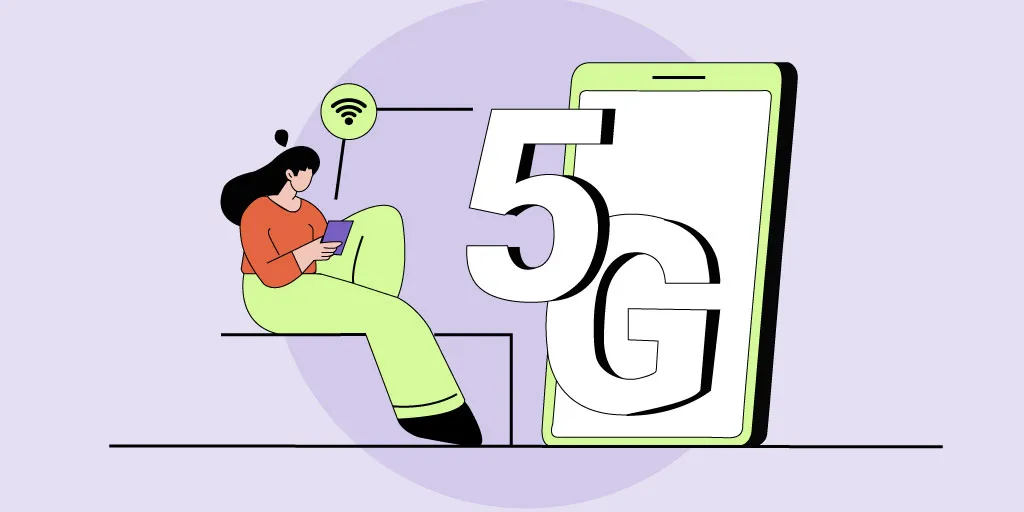
5G is a game-changer in tech's dynamic landscape, providing unparalleled speed. The blog explores its impact on mobile app development, demystifying 5G, discussing opportunities and challenges, and envisioning enhanced user experiences. The article foresees innovation from AR, VR, and IoT in healthcare, gaming, and autonomous vehicles.

By Dhruv Joshi
28 Nov, 2023
The current global network is dominated by 4G. The user base is still increasing, and here the 5G tech will be the next player and can bring even more immense changes worldwide in every sector! 5G also changes how we use our mobiles, smart devices, and other gadgets. So, 5G technology for mobile app development is worth considering for all businesses, from startups to enterprises.
Not believing in it? See the higher expectations of 5G tech for both consumers and businesses:
5G offers a high-speed network with lower latency. It makes data travel without a delay or lag
5G tech encourages more IoT because more devices can connect
We also see nearly daily innovations and news about 5G and 5G mobile app development, which are valid too! As per HIS Economics, 5G would be the next successful tech after 4G, bringing $12.3 trillion in global economic output by 2035.
In this blog, we will discover 5 G's essential features, technical aspects, best practices for 5G mobile app development, and the impact of 5G on mobile app development.
Let's get started!
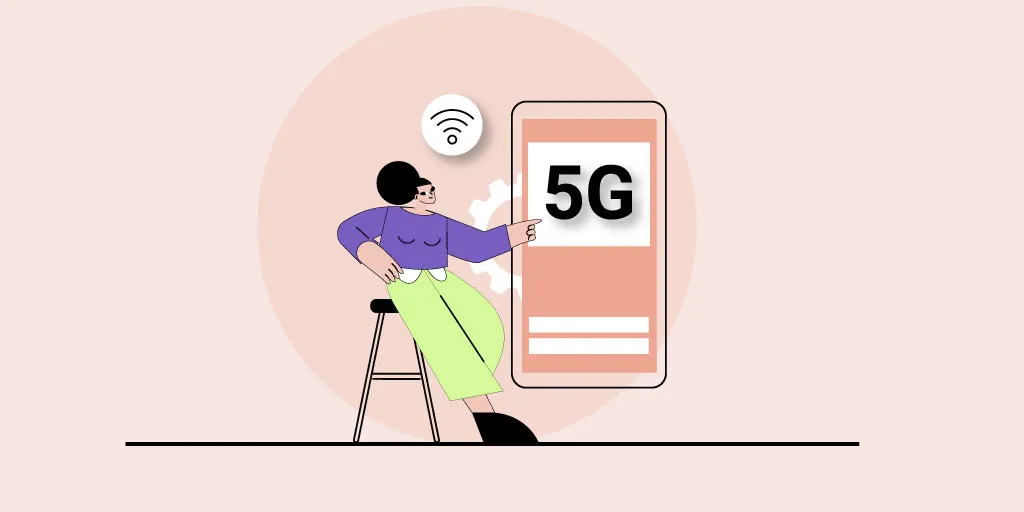
5G, short for fifth-generation wireless technology, represents a significant leap forward in mobile network capabilities. It is made to deliver high speeds, lower latency, increased capacity, and support for a wide range of applications and devices. 5G networks operate on higher frequency bands, enabling the transmission of massive amounts of data at incredible speeds.
The emergence of 5G technology has sparked a new era of connectivity and revolutionized the mobile industry. Now, we will delve into the fundamental aspects of 5G technology, its key features, advantages over previous generations, and an overview of its technical aspects.
Want more info on 5G technology for mobile app development?
Read More in Detail: How 5G Impact In Mobile App Development?
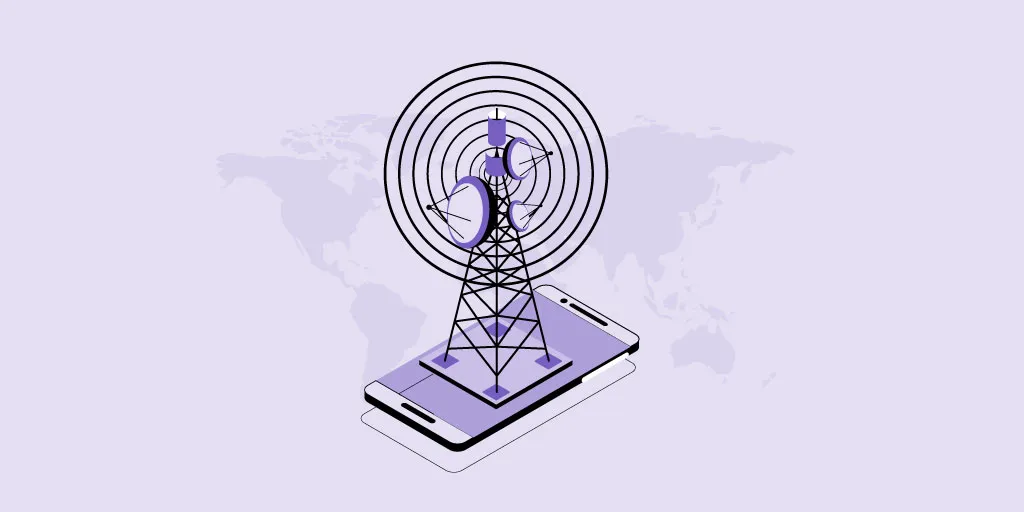 Now let's see how 5G is better than the previous generation in technical aspects!
Now let's see how 5G is better than the previous generation in technical aspects!
5G utilizes higher frequency bands, including mmWave, to achieve faster speeds. These higher frequencies allow for larger bandwidths, transmitting massive data at high speeds. However, mmWave has shorter range limitations and requires more base stations for coverage.
To overcome the range limitations of mmWave, 5G networks utilize small-cell technology. Small cells are low-power base stations deployed in high-density areas to provide localized coverage. They help improve network capacity, coverage, and overall performance.
Multiple Input Multiple Output (MIMO) technology is a critical component of 5G networks. Massive MIMO utilizes many antennas at both the base station and the user device, allowing for increased capacity, improved signal quality, and enhanced spectrum efficiency.
In the architecture of 5G networks, NFV (Network Function Virtualization) and SDN (Software-Defined Networking) technologies play pivotal roles. NFV facilitates the virtualization of network functions, allowing for flexible and scalable deployment of network services.
On the other hand, SDN separates the network's control plane from the data plane, allowing the network's central management and dynamic configuration. These technologies empower 5G networks with enhanced flexibility, scalability, and efficient network management capabilities and ultimately benefit 5G technology for mobile app development.
(1.) Enhanced Speeds
5G technology offers blazing-fast download and upload speeds surpassing its predecessors. With top data bandwidth of up to 10 Gbps, users can enjoy seamless streaming, quick file downloads, and real-time data sharing.
(2.) Reduced Latency
In short, latency is the total time to approach data from the server to the user. With the advent of 5G networks, latency is greatly minimized, allowing for seamless real-time interactions and instant response times. This reduction in latency is significant for uses such as online gaming, video conferencing, and autonomous vehicles, where immediate and uninterrupted communication is crucial.
(3.) Increased Capacity
The architecture of 5G networks is precisely engineered to accommodate an extensive multitude of interconnected devices concurrently. This exceptional capacity enables uninterrupted connectivity even in densely populated regions and effectively supports the thriving Internet of Things (IoT) ecosystem. So, this makes 5G technology for mobile app development more user-friendly.
(4.) Network Slicing
The introduction of 5G introduces the innovative concept of network slicing, which entails partitioning the network into numerous virtual networks to meet specific demands. This groundbreaking approach enables customized network services tailored to individual requirements, ensuring optimal performance and efficient resource allocation.
Now, let's explore the impact of 5G on mobile app development in various ways.
The ultra-low latency of 5G technology for mobile app development revolutionizes the user experience. Apps can respond instantaneously to user actions, providing a seamless and immersive interface. Tasks that require real-time interaction, such as online gaming and video conferencing, become more engaging and efficient.
With 5G's lightning-fast speeds, mobile apps can process and transmit data in real-time. That enables real-time analytics, instant updates, and live streaming capabilities. Industries such as finance, healthcare, and transportation can leverage this capability for time-sensitive operations and decision-making.
5G's increased bandwidth enables mobile apps to deliver high-quality multimedia content seamlessly. Users can stream 4K videos, enjoy immersive virtual reality experiences, and engage with graphics-intensive applications without buffering or lag. It paves the way for innovative content-rich apps across various domains.
With 5G, apps can offer uninterrupted streaming and lightning-fast downloads. Users can enjoy high-quality music and video streaming on the go, download large files in seconds, and experience uninterrupted cloud-based services. It improves user satisfaction and expands the possibilities for app developers.
The Internet of Things (IoT) ecosystem relies on connectivity, and 5G technology for mobile app development is the ideal infrastructure for IoT integration. Mobile apps can seamlessly connect and communicate with IoT devices, enabling remote control, real-time monitoring, and data exchange. It opens avenues for smart homes, smart cities, and industrial automation.
5G's low latency and high capacity allow for innovative IoT-driven applications. Industries can optimize operations with real-time data from connected devices, improving efficiency, predictive maintenance, and resource management. Mobile app developers can explore new agricultural, healthcare, logistics, and beyond horizons.
5G networks, combined with edge computing, bring processing closer to the user or device, reducing latency and improving response times. Mobile apps can leverage edge servers to offload computation, enabling faster data processing and reducing the dependency on centralized servers. This is particularly beneficial for time-critical applications and services.
Edge computing empowers mobile apps to deliver faster and more efficient services. Apps can leverage edge resources for real-time analytics, augmented reality experiences, and latency-sensitive tasks. This distributed computing model enhances app performance, scalability, and user satisfaction.
High speeds and low latency in 5G make it a perfect fit for augmented and virtual reality (AR/VR) experiences. With 5G, mobile applications can provide immersive AR overlays, realistic VR simulations, and interactive 3D content with minimal delays or lag.
This advancement creates exciting possibilities in various fields, such as gaming, education, training, and marketing, unlocking innovation and user engagement avenues. So, 5G is one of the promising trends in mobile app development!
With 5G, app developers can create AR/VR applications that deliver compelling user experiences. The possibilities are vast, from virtual tours and remote collaboration to interactive training and virtual shopping. 5G enables apps to seamlessly integrate AR/VR elements and take user engagement to the next level.
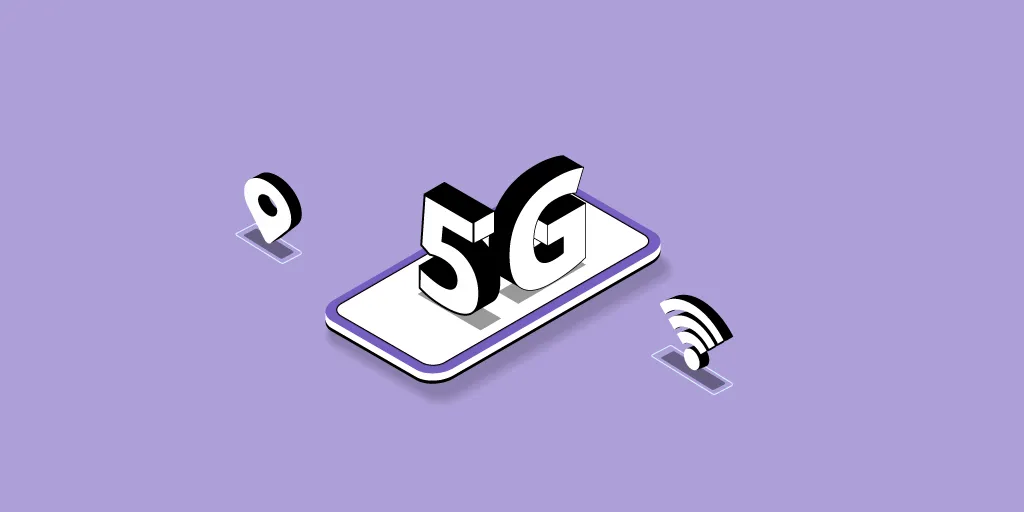 Developing mobile apps that harness the full potential of 5G technology requires careful consideration and implementation of best practices. So now we will explore critical strategies for developing 5G-compatible mobile apps to ensure optimal performance and enhanced user experiences.
Developing mobile apps that harness the full potential of 5G technology requires careful consideration and implementation of best practices. So now we will explore critical strategies for developing 5G-compatible mobile apps to ensure optimal performance and enhanced user experiences.
With 5G's high-speed capabilities, users expect instant app loading and responsiveness. To meet these expectations, developers should optimize app performance by minimizing loading times, optimizing code, and reducing unnecessary network requests. Caching and preloading techniques can also enhance the overall user experience.
Effective data management is of utmost importance in developing 5G applications. Developers must prioritize data compression techniques and transfer sizes to minimize bandwidth usage and enhance app performance. Also, implementing data prefetching and intelligent caching mechanisms can significantly improve the efficiency of data retrieval and storage, further optimizing the overall app performance.
5G's low latency capabilities can be further optimized by leveraging edge computing. App developers can minimize data travel time and reduce latency by utilizing edge servers closer to the user or device. Offloading computational tasks to edge servers can lead to faster processing, improved response times, and enhanced user experiences.
In addition to utilizing edge servers, offloading computational tasks to edge devices, such as smartphones or IoT devices, can further optimize app performance. By distributing the computational load across the network edge, developers can reduce the dependency on centralized servers and leverage the processing power available in edge devices, resulting in faster data processing and reduced latency.
Thanks to the lightning-fast speeds and incredibly low latency of 5G, mobile applications can deliver genuinely good, augmented reality (AR) and virtual reality (VR) experiences. App developers should explore integrating AR/VR development services capabilities into their apps to create engaging and interactive user experiences. It includes real-time AR overlays, 3D visualizations, and immersive VR simulations.
5G introduces specific features that can enhance the user experience. Developers should explore and leverage features such as network slicing, which allows for customized network services, and ultra-reliable low latency communication (URLLC), which ensures high reliability and low latency for critical applications.
By using these features, developers can optimize their apps for 5G networks and provide unique and tailored experiences to users.
The emergence of 5G technology has revolutionized mobile app development, offering faster network speeds, increased bandwidth, IoT integration, edge computing, and enhanced AR/VR experiences. As we gaze into the future, app developers must stay abreast of the latest 5G advancements to fully harness this technology's transformative potential.
Act today to explore the exciting possibilities and stay ahead in the 5G app development world. Connect with industry experts, join developer communities, and remain informed about the trends and tools. Start creating innovative 5G-compatible mobile apps that deliver exceptional user experiences.
Don't miss the opportunities presented by 5G technology. Embrace the power of 5G and take your mobile app development services to new heights. Get started now!
Ans: 5G has a radio wavelength that offers comparatively higher-speed content delivery, real-time data processing that reduces buffering, and low latency. It complements technological advancements like Edge computing, AR/ VR, IoT, and cloud computing to create more immersive, interactive, and responsive app experiences.
Ans: An app dries traffic through speed, performance, rapid rendering, and immersive experiences. Thus, a developer should focus on adapting the best state management, routing techniques, design ethics, security, and privacy ethics to optimize loading and performance. Furthermore, they should monitor the latest trends to implement 5 G-centric accessibilities.
Ans: NFV and SDN are considered to replace physical devices and network appliance hardware. They infuse scalability, flexibility, and deployment control into 5G network architecture. NFV takes a load of network services in a virtual arrangement, and SDN is responsible for isolating the control plane from the data plane with centralized and dynamic management. It helps customize the app, aligning the needs with a quick rollup and rolldown of new services.
Ans: The term MIMO refers to Multiple Input, Multiple Output. This technology has numerous antennas connected to the base station and user devices. It supports managing massive connections and boosting signal quality, spectrum efficiency, and capacity. Apps require a higher volume of data without data breaches, and network disturbances benefit from this simulation in the 5G network.
Ans: Each physical 5G network is divided into multiple virtual networks to manage the different network cases seamlessly. With that implementation, if any network case fails or is disrupted, other cases won’t be affected and will function efficiently. With this concept of network slicing, developers can optimize app performance, network reliability, and resource allocation with ultra-low latency.
Ans: Small cell technology was adopted to overcome the network range complexities. Companies aim to deploy numerous low-power base stations to connect user devices. For this, they face difficulty to federal and government regulatory approvals, searching and acquisition sites and other interference related to urban locality. A strategic plan and blueprint can help revamp intelligent systems and manage the 5G small cell implementation deployment.
Ans: URLLC refers to ultra-reliable low-latency communications. An app with prompt, quick responses and data transmission in real-time is preferred. Industry domains such as emergency services, telemedicine, automation, and autonomous vehicles access these technology features. Developers integrate these features into such apps to manage real-time rapid data processing, error handling, and ultra-low latency to optimize 5G app performance.
Top 11 Must-Have Features of a Custom Web Application in 2026
By Dhruv Joshi
5 min read
Generative AI Tech Stacks: Choosing the Right Tools for Scalable AI Development
By Dhruv Joshi
5 min read
Choosing Best Tech Stack for Web App Development: Performance, Cost, and Scalability
By Dhruv Joshi
5 min read
Top 9 Tech Stacks for Scalable Web Application Development
By Dhruv Joshi
5 min read
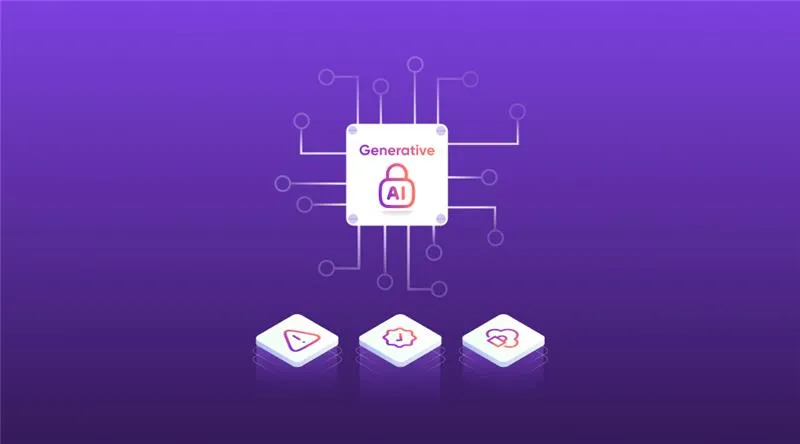
Technology

7 min
Generative AI is moving fast into enterprises, from banks to hospitals to government agencies. Adoption is rapid, but security planning lags. Unlike traditional systems, these models can be exploited through prompt injection, poisoned data, or manipulated to leak sensitive information. They are also misused for phishing, deepfakes, and malicious code.

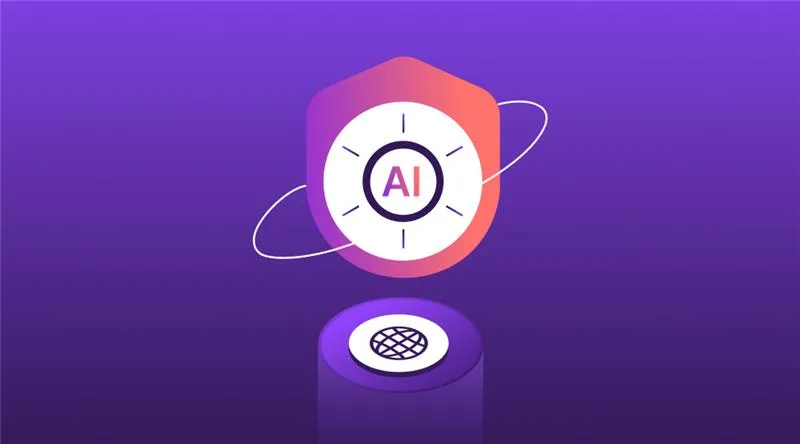
Technology

7 min
AI-powered Web Application Firewalls (WAFs) go beyond static rules by using machine learning, anomaly detection, and predictive analysis to block zero-day threats, reduce false positives, and protect APIs at scale. Unlike traditional WAFs, they self-learn, adapt in real time, and cut operational costs while improving compliance and trust.

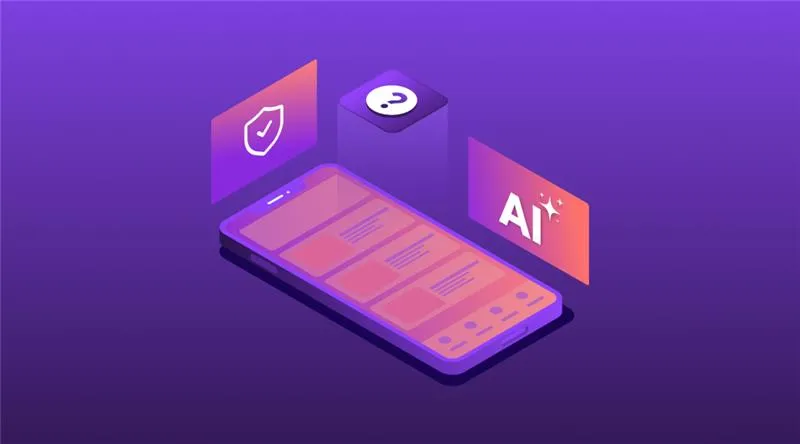
Technology

5 min
AI is redefining mobile app security by transforming how threats are detected, tested, and prevented. From continuous monitoring and fraud detection to compliance with regulations, AI ensures apps remain resilient against modern risks. This means safer apps, protected users, and stronger businesses. Investing in AI-driven security today builds trust, drives growth, and secures long-term competitive advantage.


Feeling lost!! Book a slot and get answers to all your industry-relevant doubts